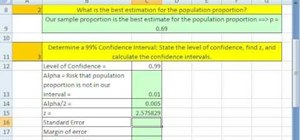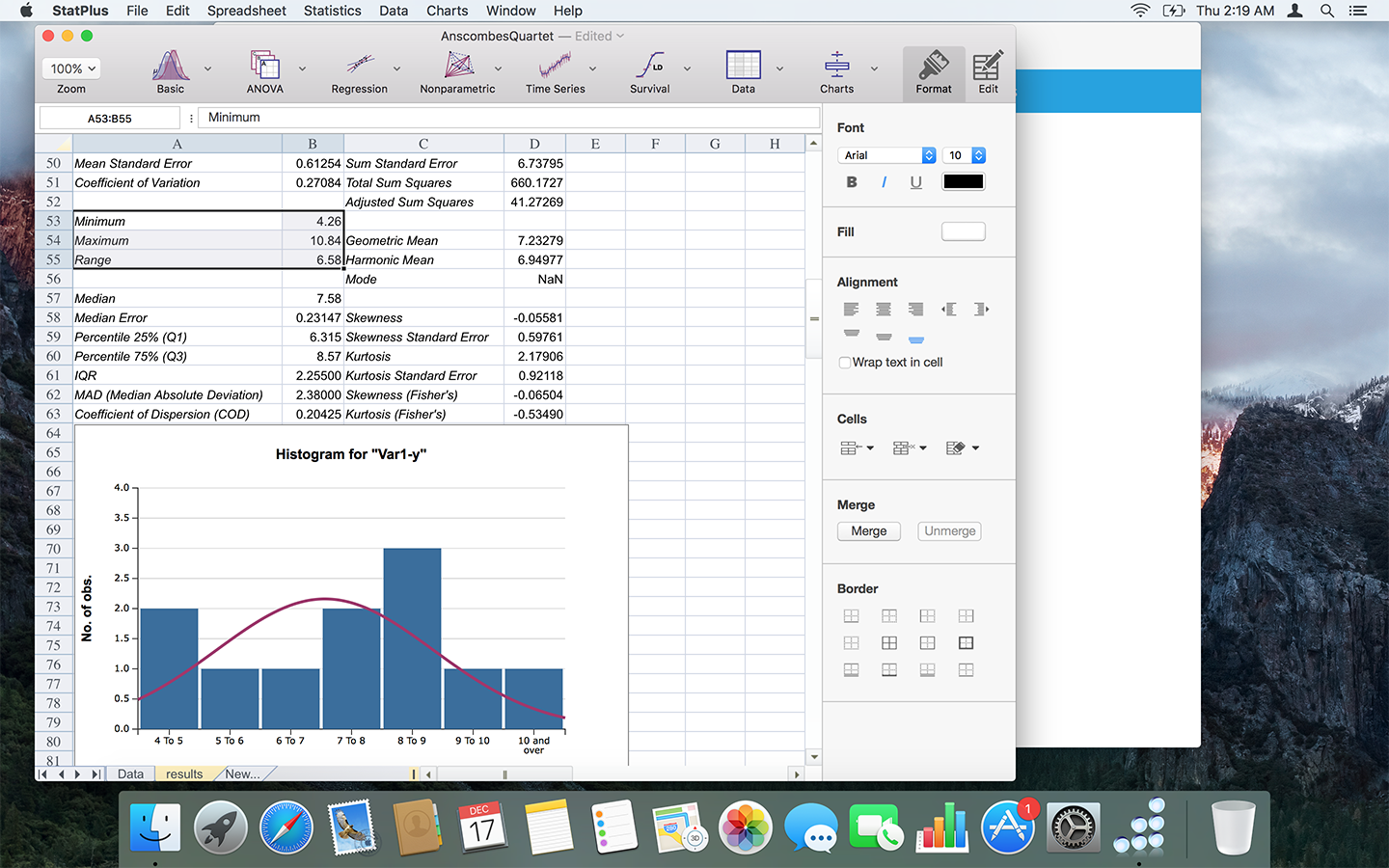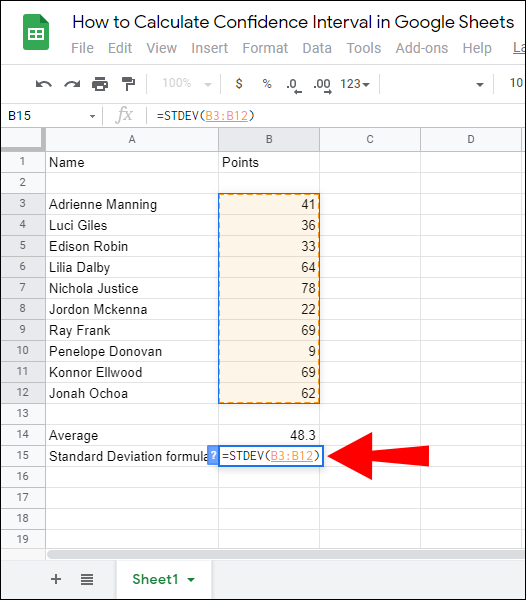
- #Confidence limit in excel for mac manual#
- #Confidence limit in excel for mac plus#
- #Confidence limit in excel for mac series#
For values in Sheet1!$G$2:$G$10, enter the address as Sheet1!R2C7:R10C7.

The edit box is so narrow, that you cannot see the entire expression at once, and it will be difficult to find this error. Make sure you delete the entire contents of the entry box before selecting a range, or at least select it all, or Excel will think you meant to enter something like the following, which will lead to an error message. You can enter another constant value, and you don’t need to type the equals sign or curly brackets Excel will insert them. (It was easier in 2003, where data entry took place directly on the main dialog, but we’re not talking about productivity today.) By default, each field contains a one element array with the element value equal to one. A small child dialog appears with entry boxes for selection of the custom error bar values. Move the dialog so it does not cover the range containing your custom values, then click on the Custom option button, and click on Specify Value. To assign custom values to the error bars, select the horizontal or vertical error bars, and on the Horizontal or Vertical Error Bars tab of the Format Error Bars dialog. Click on the horizontal error bars to change the dialog. Remember that Microsoft made these chart formatting dialogs non-modal, so you can click on objects behind the dialogs. We are used to having two tabs, one for the vertical error bars, and also one for the horizontal error bars. But there is no obvious way to switch to the horizontal error bars.
#Confidence limit in excel for mac series#
(If the chart has more than one series, and you had not specifically selected one series, there is an intermediate dialog asking which series to work with.) This dialog doesn’t look too unfamiliar. X (if it’s an XY chart) and Y error bars with initial constant values of 1 are added to the chart series, with the Y error bars selected, and the Format Error Bars dialog is displayed with the Vertical Error Bars tab showing.

Finally, select the More Error Bars Options at the bottom of the list. Click on the Error Bars button, and scratch your head while you try to decipher the options. To discover these features in Excel 2007, select the chart and navigate to the Chart Tools > Layout contextual tab. The Error Bar tab(s) as well as the tabs for Data Label, Up/Down Bars, High/Low Lines, and other features have been removed to make them more discoverable, at least that’s what we were told. There is no convenient tab on the Format Series dialog. It is harder to apply error bars in Excel 2007 than in earlier versions.
#Confidence limit in excel for mac manual#
A whole set of custom error bar values can be added to an entire series in one operation. Put your custom values into a range parallel to your X and Y values as I’ve done with this sample data, then use the manual technique or the utility to add all the values to the chart series in one step. If you select a single value for your custom error bars, this single value will be applied to all points in the series. This chart shows just the Y error bars, to show clearly that each point has custom values different from other points:Ī single custom error bar value cannot be added to a single data point, and custom error bar values cannot be added to a series of data points one point at a time. After following the appropriate protocol below, the chart will have custom error bars on each data point, based on the additional columns of data. The protocols for adding custom error bars differ between Classic Excel and new Excel. The chart itself is easy: create an XY chart using the data in columns A and B. The error bars are also drawn using all the error bar data at once: C2:C6 and D2:D6 for horizontal and E2:E6 and F2:F6 for vertical. The series is plotted using all the data at once, with X in A2:A6 and Y in B2:6. The data is set up so that, for example, cells C2 and D2 have the values for the positive and negative horizontal (X) error bars for the point defined by X and Y values in A2 and B2. Cells E2 and F2 have the values for the positive and negative vertical (Y) error bars for this point.
#Confidence limit in excel for mac plus#
Suppose we have the following data: X and Y values, plus extra columns with positive and negative error bar values for both X and Y directions. I usually put these values in the same table as the actual X and Y values Manually Defining Custom Error Bars Sample Data and Charts

You need to put all of the individual error bar values into a range of the worksheet.

However, you can individual custom error bar values to all points in a plotted series. You cannot add custom error bar values to a single point in a chart. Both articles contained instructions for adding custom error bar values for individual points, but judging from the emails I receive, a separate article on custom error bars is needed. I’ve written about Excel chart error bars in Error Bars in Excel Charts for Classic Excel and in Error Bars in Excel 2007 Charts for New Excel.


 0 kommentar(er)
0 kommentar(er)
